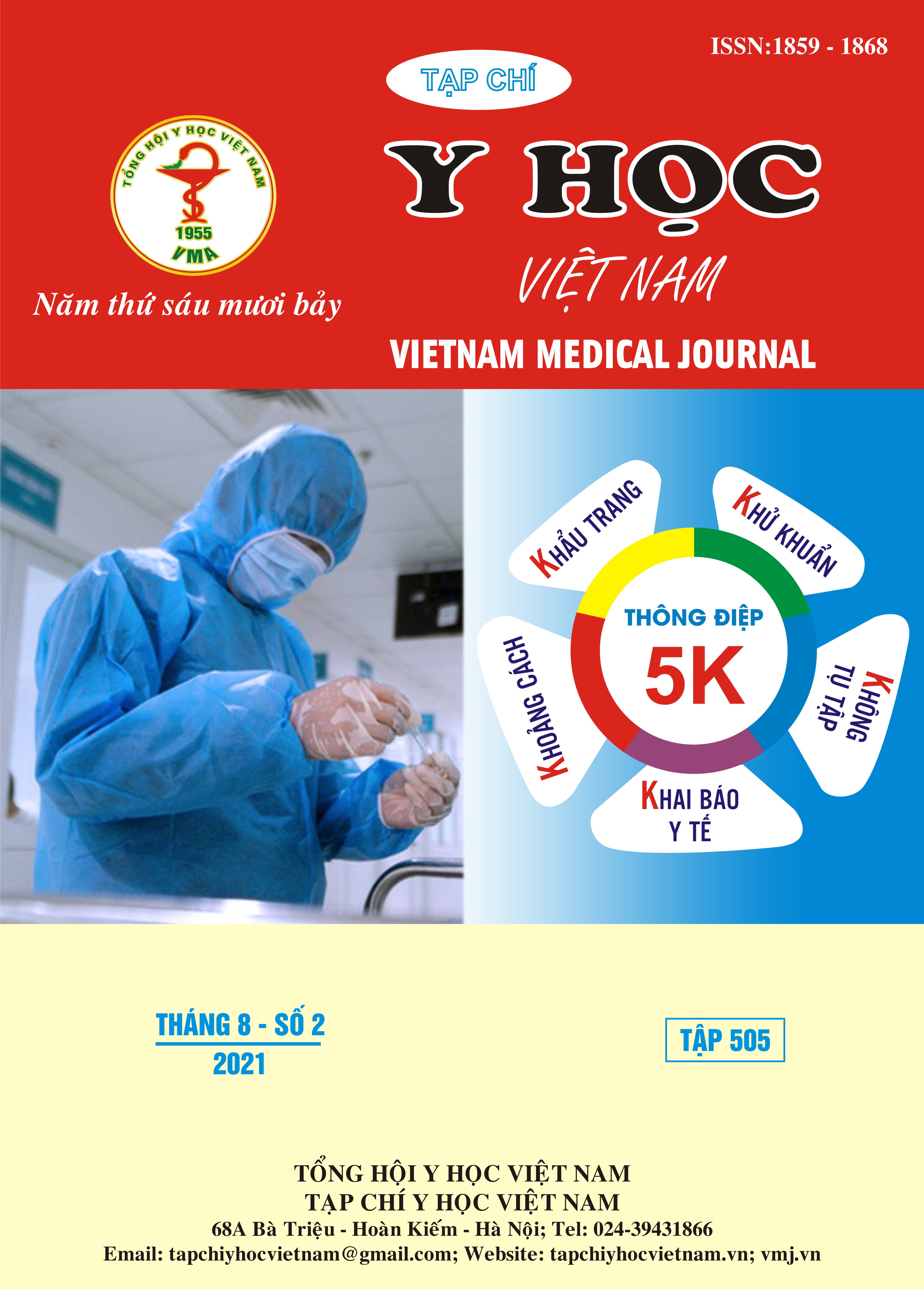GÁNH NẶNG NHIỆT CỦA NHÂN VIÊN Y TẾ VÀ CÁN BỘ PHÒNG CHỐNG DỊCH TRONG TRANG PHỤC PHÒNG DỊCH
Nội dung chính của bài viết
Tóm tắt
Mục tiêu: Đánh giá gánh nặng nhiệt của nhân viên y tế và cán bộ phòng chống dịch trong trang phục phòng dịch. Đối tượng và phương pháp: 30 nhân viên làm việc với trang phục quần áo phòng dịch trong 4 giờ liên tục được ghi liên tục nhiệt độ bên trong và ngoài bộ quần áo phòng dịch bằng gắn Dataloger; đo nhiệt độ trung tâm, nhiệt độ da, khối lượng mồ hôi, (trước - sau khi làm việc) và phỏng vấn cảm giác nhiệt. Kết quả: - 97,1% thời gian nhiệt độ bên trong cao hơn nhiệt độ bên ngoài bộ quần áo phòng dịch từ 0,50C đến 4,50C. - Có sự tăng nhiệt độ da, nhiệt độ dưới lưỡi, khối lượng mồ hôi ở nhân viên làm việc trong trang phục quần áo phòng dịch (p<0,05-p<0,001) sau lao động so với trước lao động. - Cảm giác “nóng” và “rất nóng”; cơ thể ở mức “rất khó chịu” và “không thể chịu đựng nổi” tăng dần theo từng giờ, tỷ lệ thuận với thời gian mặc quần áo phòng dịch. 93,4% có cảm giác “nóng” và “rất nóng”; một nhân viên phải dừng thử nghiệm và phải xử lý vấn đề về sức khỏe. Kết luận: Mặc quần áo phòng dịch khi làm việc ảnh hưởng bất lợi tới sức khỏe.
Chi tiết bài viết
Từ khóa
Gánh nặng nhiệt, quần áo phòng dịch, nhân viên y tế, cán bộ phòng chống dịch
Tài liệu tham khảo
2. DuBois A.B., Harb Z.F., and Fox S.H. (1990). Thermal discomfort of respiratory protective devices. Am Ind Hyg Assoc J, 51(10), 550–554.
3. Laird I.S., Goldsmith R., Pack R.J. and Vitalis A.. (2002). The effect on heart rate and facial skin temperature of wearing respiratory protection at work. Ann Occup Hyg, 46(2), 143–148.
4.Parsons KC .(2010). Human thermal environments. 2nd edn. London, UK: Taylor & Francis


